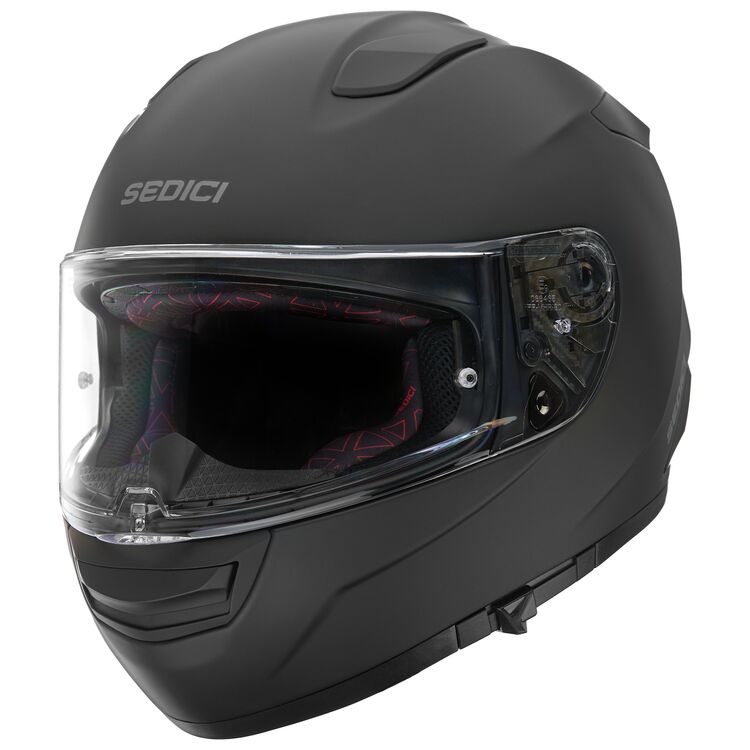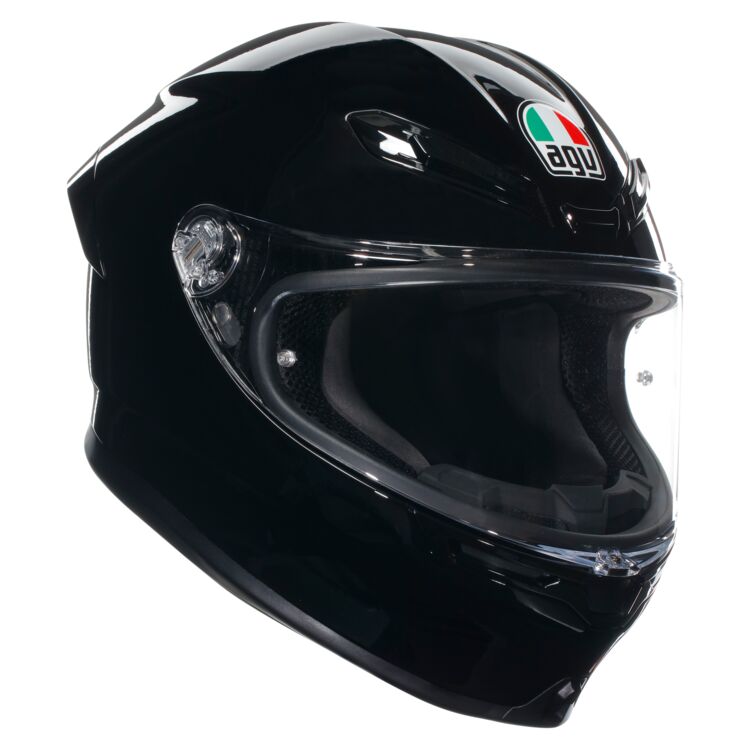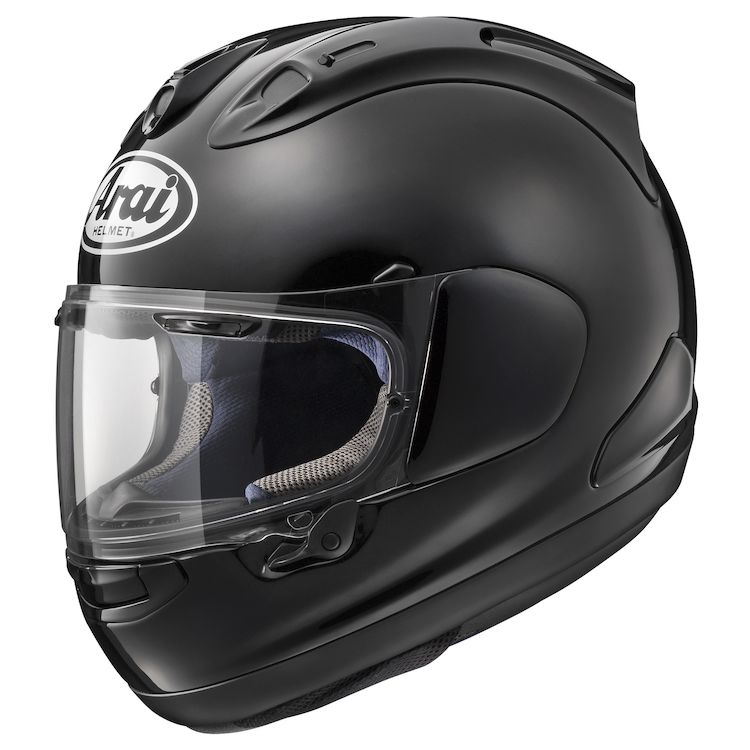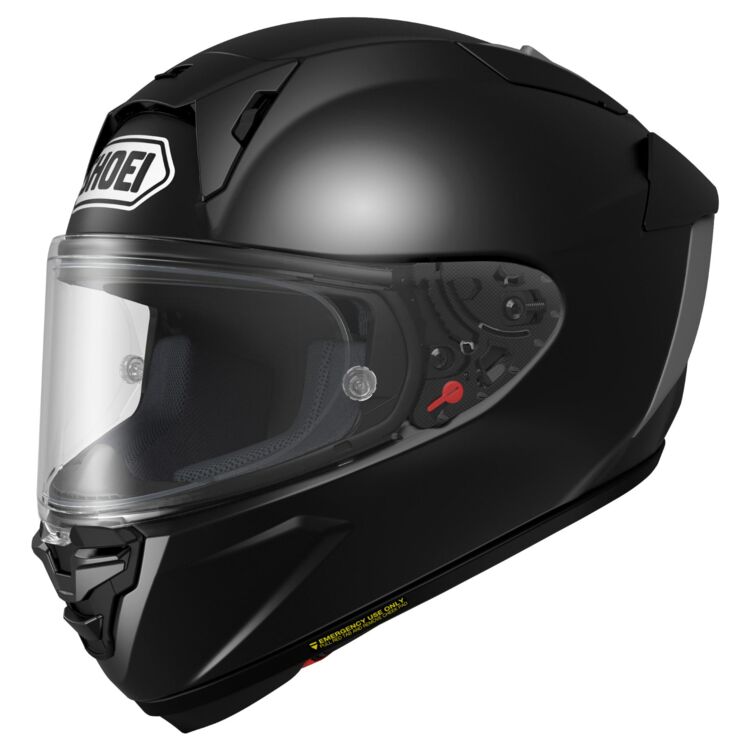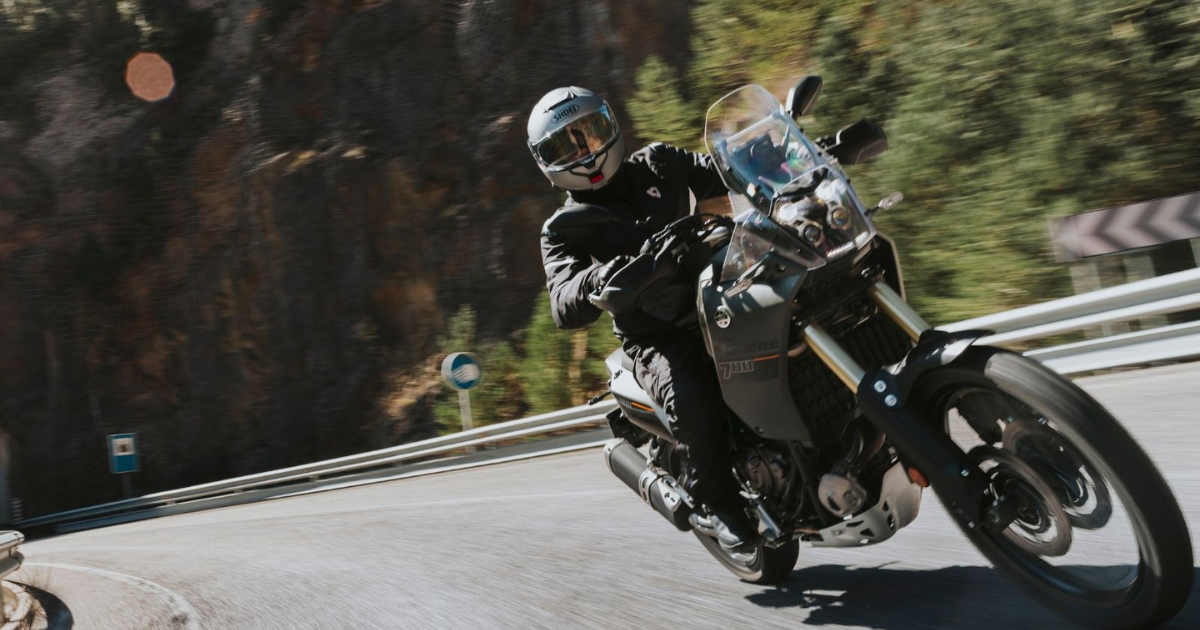
ECE vs Snell: Decoding Helmet Safety for Every Rider
left for contents
The alphabet soup of ECE, Snell and DOT ratings can feel like a secret handshake. It isn’t until you need a new lid that you realize just how confusing helmet safety standards can be. If you’ve ever wondered whether those extra letters on the sticker actually matter for your ride, you’re in the right place.
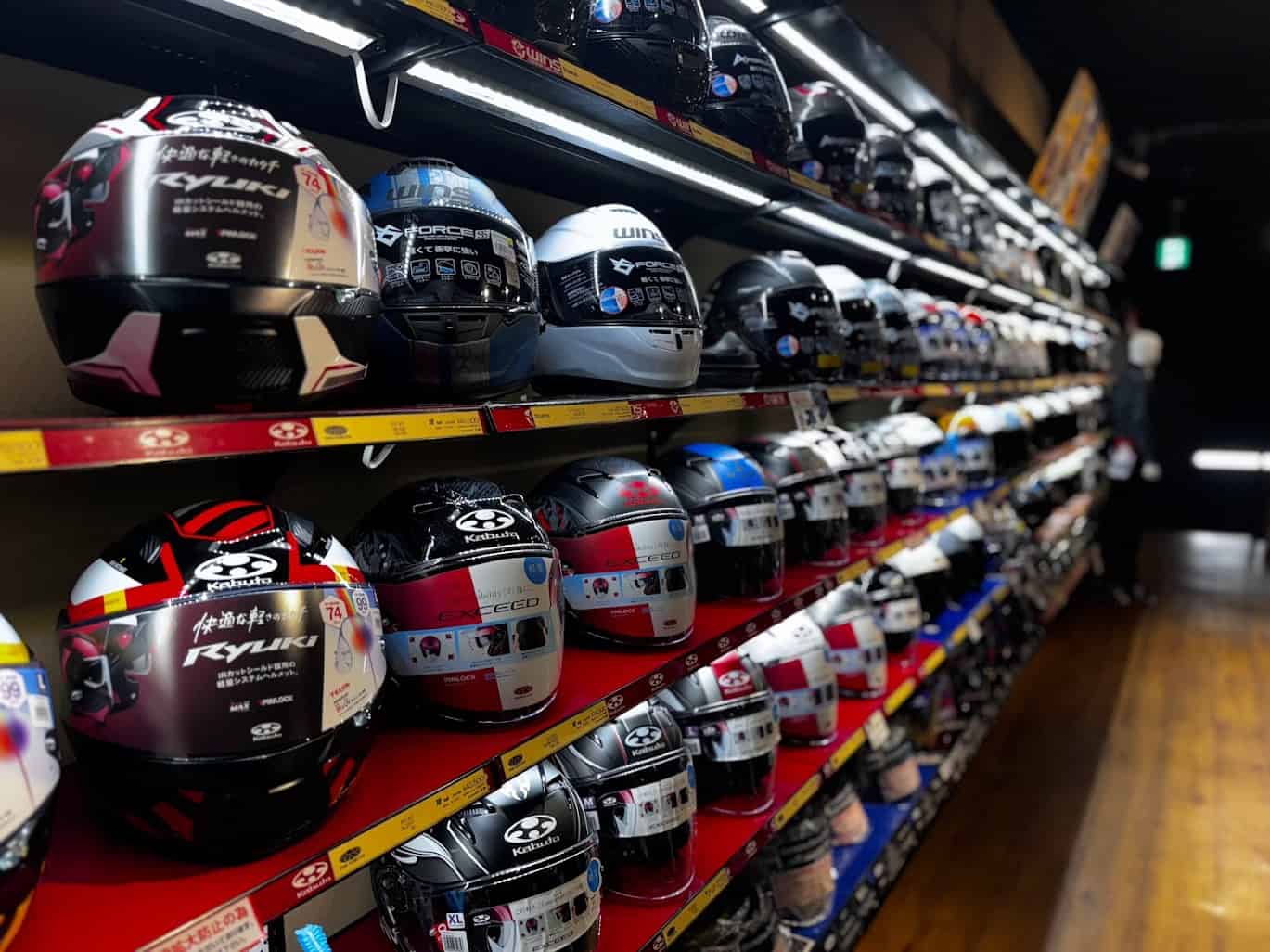
Many riders assume that more certifications always equal more protection. The reality is more nuanced. Some of the most expensive race lids are built around Snell’s high‑energy impact limits while great street helmets are optimized around ECE 22.06’s multi‑hit and rotational‑impact tests. Snell helmets aren’t always more protective for street crashes, and helmets built only to the European ECE standard aren’t legal on some U.S. racetrack. Add in the new Snell M2025 standard with oblique (rotational) tests and the stakes get even higher. This guide cuts through the noise so you can confidently pick a helmet that matches the way you ride.
ECE vs Snell – What Those Labels Mean for You
How Snell and ECE Testing Differ
Understanding how the two major standards are designed helps explain why helmets feel and perform differently. ECE 22.06 is the latest European standard and is mandatory for road helmets sold in most of the world. It uses flat, hemispheric and curbstone/sloping anvils to simulate surfaces and includes both slow‑ and high‑speed impacts, oblique (rotational) hits, random strike points, and tests helmets with accessories attached. The testing allows only 275 g peak acceleration but also measures energy transfer over time to encourage softer liners that reduce brain‑shearing forces. The updated 22.06 also evaluates modular hinge strength and sun‑visor rigidity, meaning ECE‑compliant helmets can’t rely on flimsy mechanisms to pass. These improvements make ECE‑rated helmets feel slightly plusher, and they often deliver excellent rotational and multi‑impact protection.
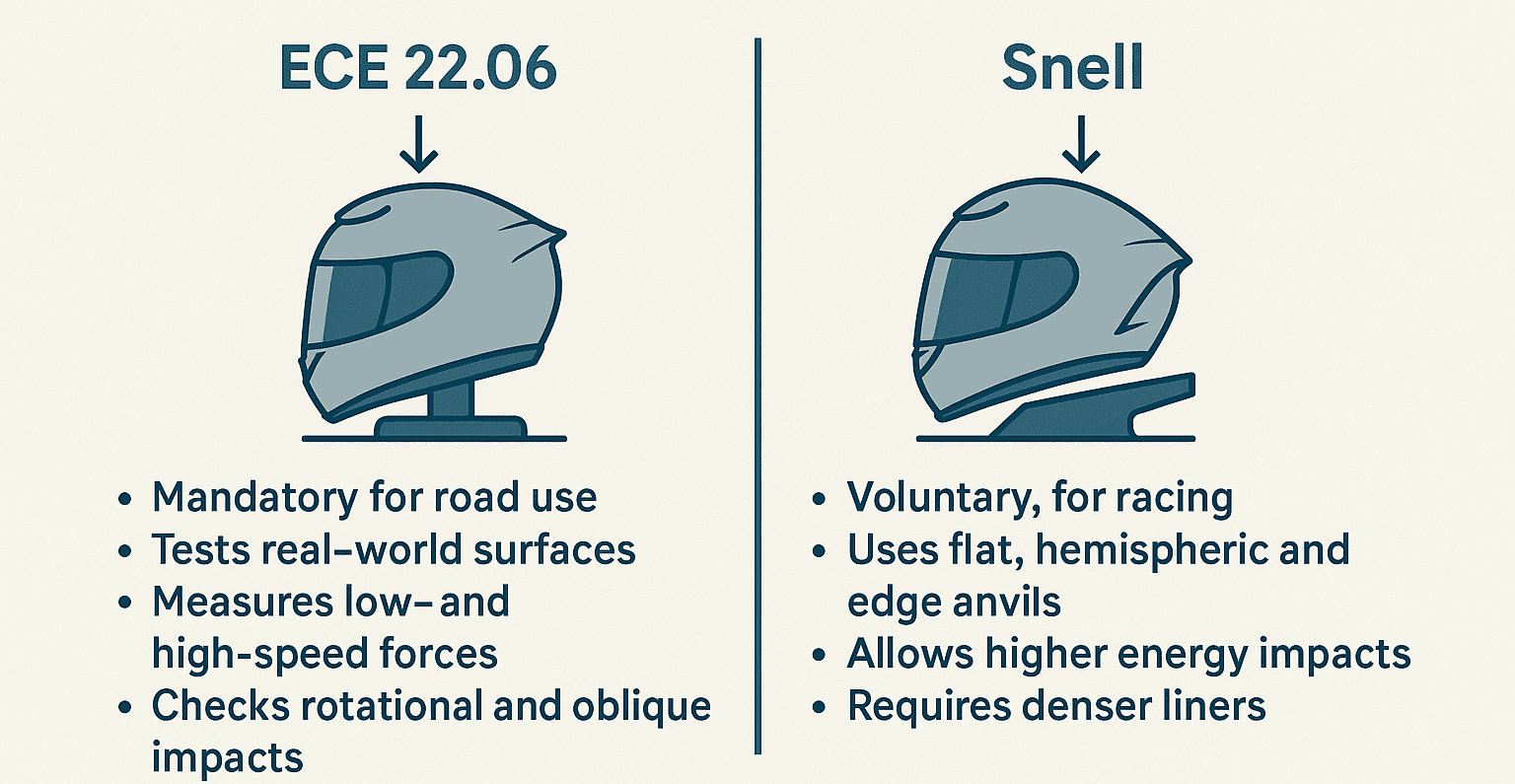
Snell is a voluntary certification administered by the independent Snell Foundation. Snell tests use flat, hemispheric and edge anvils (that simulate sharp curbs) and allow impacts at higher energies than ECE. The foundation also checks chin‑bar rigidity, penetrates the shell and face shield with weighted points, and ensures protrusions break away above 7 mm. Because Snell helmets must survive a high‑energy hit on the same point, manufacturers often use denser, firmer EPS liners. Snell publishes M2020 standards aligned to DOT and ECE hardness limits and is introducing M2025, which finally incorporates oblique impact tests and rotational energy limits. Snell‑certified helmets are widely accepted at U.S. racetracks and by competitive racing bodies.
Which Standard Suits Which Rider?
- Street & Touring Riders – You’re more likely to experience glancing blows and multi‑impact slides at moderate speeds. Helmets built to ECE 22.06 tend to have softer liners and better rotational‑impact management, which can lower concussion risk. You’ll also find lighter shells with better aerodynamics and noise control, making ECE lids ideal for long days on mixed roads.
- Track & High‑Performance Riders – Many racetracks in North America require Snell or FIM‑homologated helmets. These lids are optimized for one very hard hit and resist shell penetration. The EPS can feel firmer, but at triple‑digit speeds the extra density helps preserve the liner in a catastrophic crash. Snell’s new M2025 standard narrows the gap by adding rotational criteria.
- Commuters & Adventure Riders – If you’re weaving through traffic or exploring fire roads, look for helmets certified to both ECE and DOT or ECE and Snell. Dual‑certified helmets offer the best compromise of cushioned comfort and high‑energy protection.
With the theory sorted, let’s talk about helmets that actually deliver on these standards and provide the features that matter on roads.
Top ECE‑Certified Helmets for Everyday Riding
Sedici Strada III – Affordable ECE 22.06 Comfort for Daily Miles
The latest Sedici Strada III proves you don’t need to shell out premium money for an ECE 22.06‑rated lid. RevZilla’s product listing notes that the new Strada meets DOT and ECE 22.06 and uses a five‑layer composite shell with carbon and aramid fibers. Multiple shell sizes allow Sedici to keep each helmet compact, reducing that dreaded “bobble‑head” look while cutting weight. Improved aerodynamics and a revised spoiler make the Strada more stable at highway speed, while redesigned vents boost airflow yet lower wind noise. A plush interior features 45 mm speaker pockets and a moisture‑wicking liner; the double‑D ring strap and stainless‑steel latching mechanism feel secure without pinching.
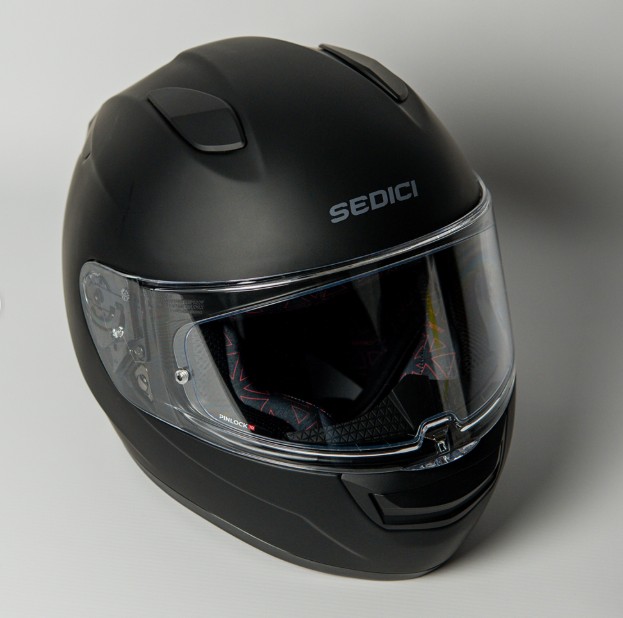
On the road, the Strada’s broad eye port and adjustable chin vent make it a versatile commuter helmet. The 22.06 testing means it has been evaluated for rotational impacts and multiple strike points, giving peace of mind when lane‑splitting in traffic. Though not as feather‑light as carbon‑fiber race lids, riders report minimal neck fatigue thanks to its balanced weight. If you crave a lighter helmet, Sedici’s Carbon variant drops several ounces but keeps the same features.
A budget-friendly full-face helmet offering thoughtful comfort and ventilation, with modern interior design and solid safety, ideal for entry-level and everyday riders.
- Strong ventilation keeps head cool
- Comfortable laser-cut interior fit
- Aerodynamic shell reduces drag
- ECE-certified for trusted safety
- Padding feels less plush
- Wind noise at higher speeds
AGV K6 S – Ultra‑Light Touring Helmet with 190° Vision
The AGV K6 S shows how far ECE helmets have come. A carbon‑aramid shell allows the medium K6 S to weigh just 2 lb 15 oz—close to some carbon race lids. The updated “S” version swaps a taller rear spoiler to meet ECE 22.06’s stricter stability tests and random impact requirements. The helmet uses four shell sizes so each size feels compact and sits low on the head. Riders praise the 190‑degree horizontal field of view and quick‑change visor that can be swapped tool‑free for a dark shield. Ventilation comes from dual crown intakes and a brow vent; while airflow is good, some reviewers note the vent sliders are small and fiddly, especially with winter gloves.
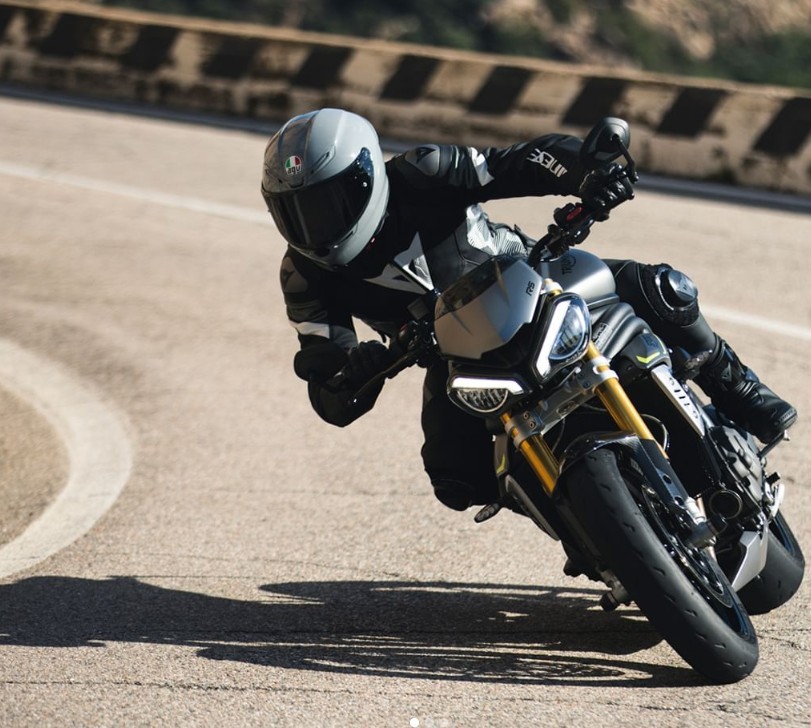
In practice, the K6 S is a dream for long‑distance touring. Its feather‑weight shell reduces neck fatigue and the aerodynamic profile stays steady in crosswinds. The plush liner accommodates glasses and has plenty of room for Bluetooth speakers. Noise levels are average; a thicker neck roll would quieten turbulence but might add weight. If you ride in hot climates, consider carrying a dark visor; the stock clear shield is great for cloudy days but invites sun glare.
A lightweight and aerodynamic helmet designed for ultimate comfort and protection, inspired by MotoGP technology.
- Ultra-light composite shell reduces fatigue
- 190° field of view enhances road awareness
- Aerodynamic design with low wind noise
- Excellent ventilation with multi-vent airflow
- Eyeglass-friendly interior and comms-ready
- Vent sliders can be fiddly with gloves
- Compact sizing—double-check shell fit
Our Review: Want to know how it performs long-term? Read our full AGV K6 S helmet review.
Shoei RF‑1400 – Snell‑Rated Everyday Helmet with Refinement
Shoei’s RF series is the all‑rounder line many of us cut our teeth on. The RF‑1400 is the brand’s lightest and most compact Snell‑approved full‑face helmet. A detailed review from Chaparral Motorsports notes that Shoei used wind‑tunnel testing to reduce drag by 4 % and lift by 6 % compared with the outgoing RF‑1200. The new CWR‑F2 shield provides a taller eye port and improved optics; a centrally located lock evenly distributes forces and makes it easier to open with gloved hands. Redesigned forehead and top vents channel more air while being easier to operate with gloves. Shoei also added thicker cheek pads with glasses channels and a new window‑beading system to cut wind noise. The multi‑ply Matrix AIM+ shell and dual‑density EPS liner keep the weight around 3 lb 10 oz in size large.
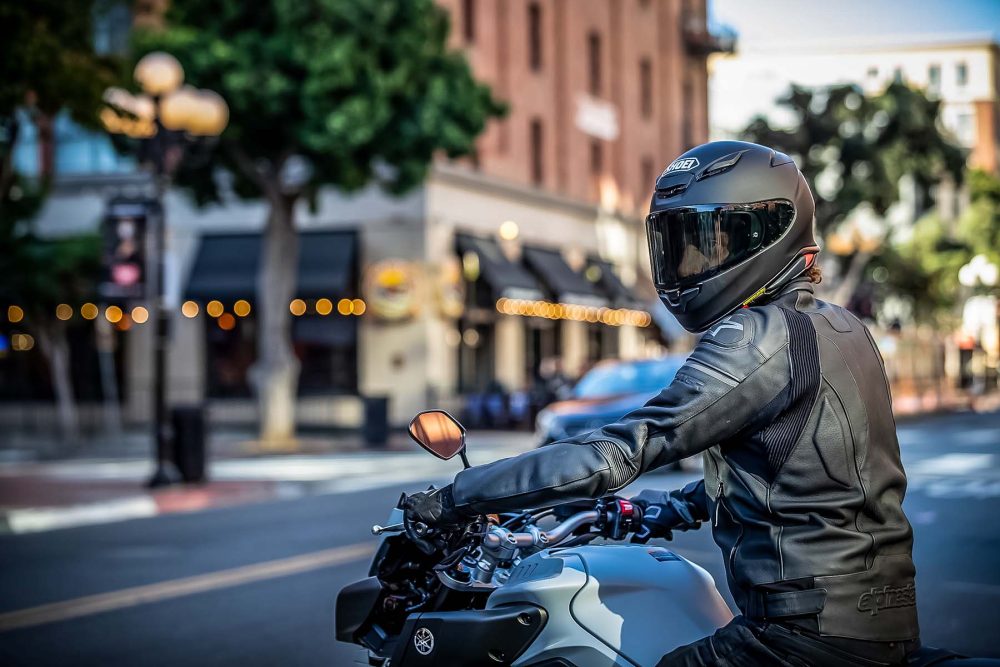
On the street, the RF‑1400 feels like a premium touring helmet that can pull weekend track duty. The new vent design draws a noticeable stream of air at speed without letting rain drip inside, and the visor mechanism’s improved detents make it simple to crack open for demisting. While heavier than the K6 S, the RF‑1400’s stability and low lift reduce neck strain on naked bikes. The firmer Snell‑compliant liner also translates to more feedback from the road, a feature some riders appreciate and others find less plush. If you’re seeking the quietest lid, Shoei’s GT‑Air II is slightly quieter but isn’t Snell‑certified; the RF‑1400 remains our pick for an everyday Snell‑rated helmet.
One of the top motorcycle helmets for street riding due to its incredible safety ratings, solid build construction, versatile shell for street and track riding, and reasonable price. Long term review here.
- Staff pick at Revzilla
- Quietest helmet on the market
- Excellent build quality
- Thick noise-sealing cheekpads
- Visor seal built like Fort Knox
- Snell certified for track use
- Lacking touring comfort features like drop down sun shield
Our Review: We compared the RF-1400 head-to-head with the K6 S— check out our Shoei RF-1400 vs AGV K6 S review.
Premium Snell & FIM Helmets for High‑Performance Riding
Bell Race Star DLX Flex – Carbon‑Shell Racer with Adaptive Visor
Bell’s Race Star DLX Flex brings track‑grade safety to the street. Hot Bike Magazine praises its 3K carbon fiber shell, which keeps the weight around 1,540 g (3.3 lb) and makes the new model about 10 % lighter than its predecessor. The helmet uses Bell’s unique Flex Energy Management liner—a three‑layer system that manages low‑, mid‑ and high‑speed impacts. A photochromic ProTint visor automatically darkens in bright sun and clears when the sky dims, eliminating the need to carry multiple shields. The Magnefusion cheek pads use magnets for easy removal and quick swaps, and they double as an emergency release to aid first‑responders. Five shell sizes and six EPS liners allow for a near‑custom fit, while an anti‑bacterial, washable liner keeps funky smells at bay. The helmet is certified to DOT, Snell and ECE, making it legal on almost any circuit.
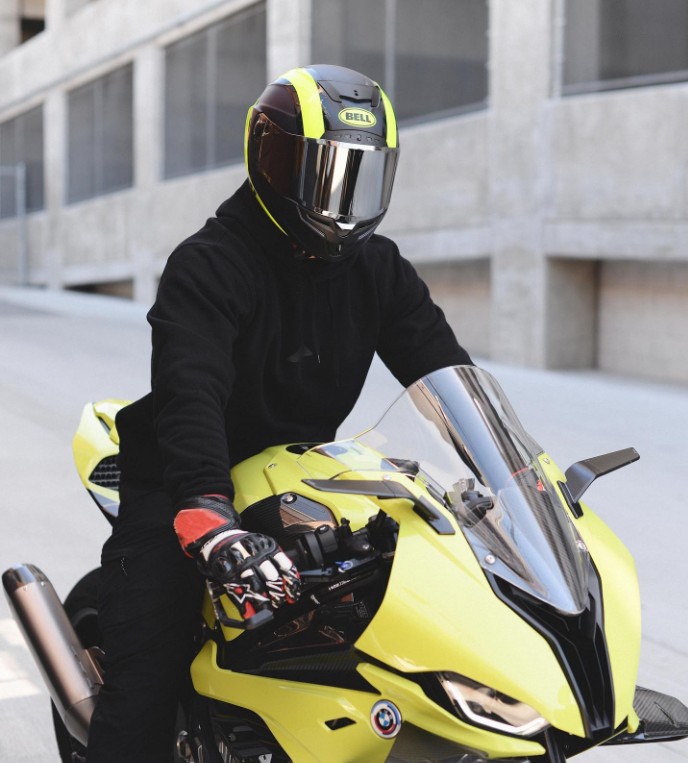
On the road, the Race Star’s carbon shell feels feather‑light, yet the dense Flex liner inspires confidence at triple‑digit speeds. The ProTint shield’s adaptive tinting is a blessing on long tours where weather changes quickly. Airflow is generous through two chin vents and a brow intake, yet the helmet stays stable thanks to its carefully sculpted spoiler. The premium price (around $770–$870) is justified by the combination of weight savings, high‑tech liner and convenient visor. For riders who prefer an even lighter feel, Bell’s Race Star Flex (non‑DLX) drops the photochromic shield and saves a few ounces.
Premium carbon-fiber street-and-track helmet offering top-tier impact protection, adaptive tinting, and race-ready comfort in a lightweight, aerodynamic package.
- Superior multi-density “Flex” liner for varied-speed impact protection
- Photochromic ProTint visor auto-adjusts to light conditions
- Comfortable, cool Virus Cool Jade liner stays fresh on long rides
- Secure magnetic chin strap and removable cheek pads with speaker pockets
- Fit can be tight—try before you buy for best sizing
- Ventilation brings more wind noise than ultra-quiet lids
Arai Corsair‑X (RX‑7V) – The Snell Benchmark for Racers
When money is no object and lap times matter, the Arai Corsair‑X has long been the benchmark. Best Beginner Motorcycles’ review notes that the Corsair‑X carries DOT and Snell M2015 certifications in the U.S., and the European RX‑7V variant adds ECE 22.05 approval. The helmet uses Arai’s PB‑SNC² complex laminate shell that feels extremely solid and weighs about 1,645 g (3 lb 10 oz). Ten intake and exhaust vents move air through a complex network of channels; a large chin vent directs air through the chin bar and across the visor to reduce fogging, while brow vents route airflow back towards the temples. Arai’s adjustable rear spoiler can be raised or lowered to trim lift at high speed. Inside, the Eco‑Pure liner is customizable, and cheek pads have tear‑off foam to tune fit. The Corsair also includes two chin curtains: one large removable curtain to block wind and a smaller retractable curtain under it.
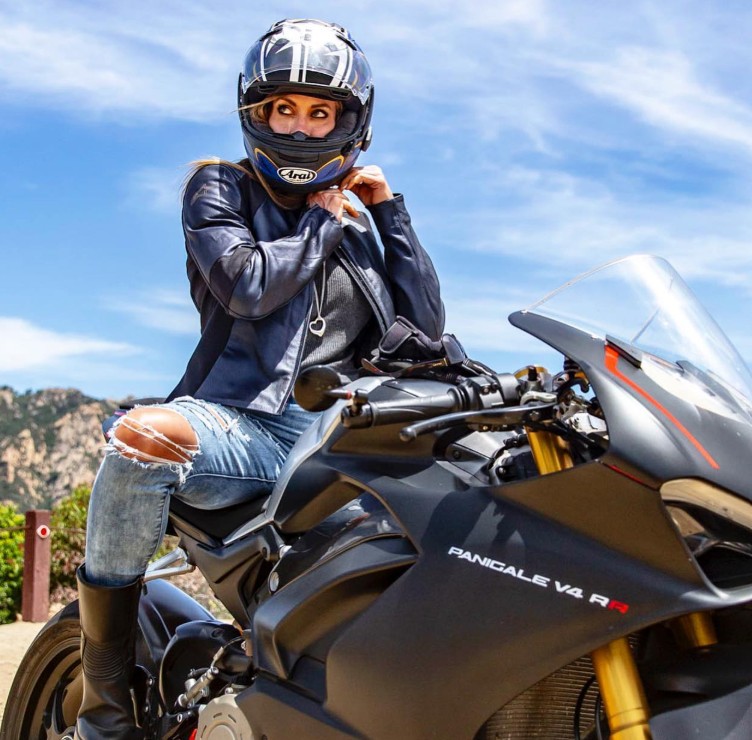
On a racetrack or tucked behind a sport bike fairing, the Corsair‑X feels like an extension of your head. The tall eye port provides excellent upward vision for tucking under bubble windscreens. Ventilation is outstanding, and noise levels drop considerably when you lean into a racing crouch. The helmet’s weight is offset by exceptional stability; the shell resists buffeting and head shake even in turbulent air. Downsides include the high price (around $800–$1,000) and the fact that the emergency cheek‑pad pulls are small and hidden behind the chin curtain. Riders looking for a quieter street‑oriented Arai might consider the Quantum‑X or Regent‑X.
Top-tier racing helmet with premium safety, ventilation, and comfort.
- Superior impact protection with PB SNC2 shell
- Excellent ventilation with adjustable diffuser system
- Wide, clear view with Pinlock-ready VAS shield
- High price point compared to competitors
Our Review: For a firsthand account of the Corsair-X’s performance, read Motorcycle Helmet Safety Beyond the Basics: My Crash Story.
Shoei X‑15 / X‑Spirit III – MotoGP‑Derived Aerodynamics
Shoei’s X‑15 (sold in some markets as the X‑Spirit III) is the helmet you see on MotoGP champions. Our own review highlights how Shoei used extensive wind‑tunnel testing to create interchangeable stabilizer flaps and an adjustable rear spoiler that dramatically reduce buffeting and neck fatigue. The helmet’s interior is highly customizable: multiple cheek‑ and center‑pad thicknesses allow you to dial in the perfect fit, and the liner can be tilted forward or backward to improve your field of vision when tucked. The Emergency Quick Release System lets first responders pull out cheek pads without disturbing your neck. Ventilation is excellent with large intake ports, though the aggressive airflow creates considerable wind noise; earplugs are highly recommended.
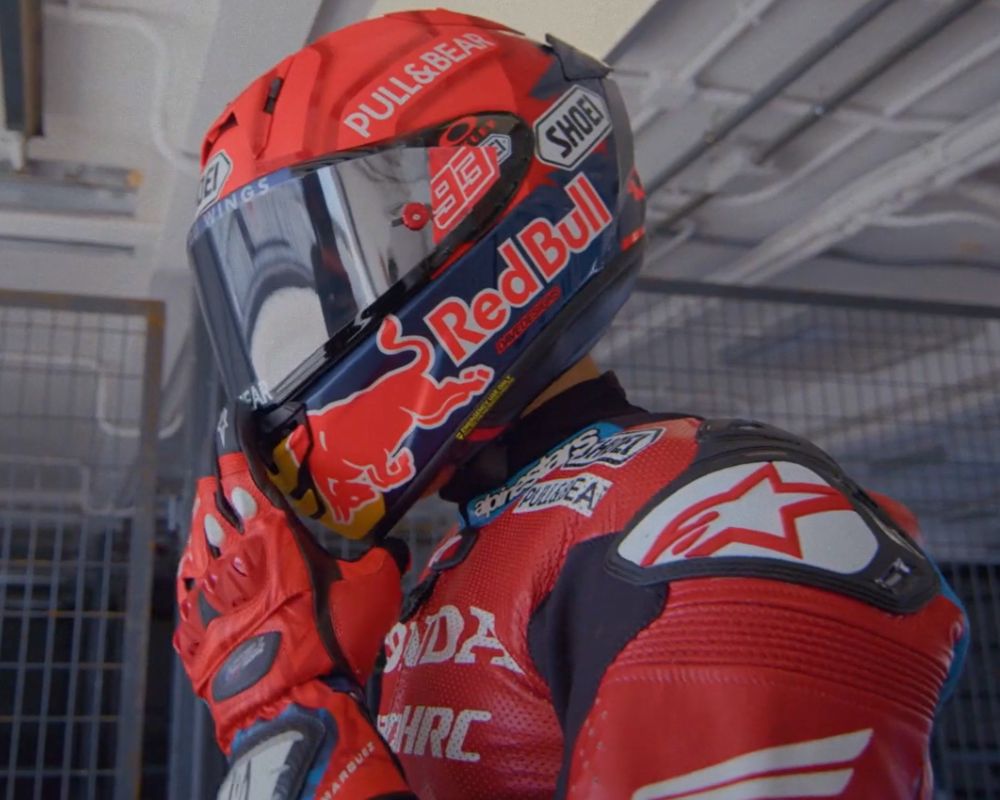
The X‑15 uses Shoei’s AIM+ shell and features a double‑D ring closure. It meets DOT, Snell and FIM standards, making it legal for track use worldwide. Weight is slightly higher than the RF‑1400 but similar to the Arai Corsair. The premium price is justified by the MotoGP‑derived aerodynamics and FIM homologation. For riders who value absolute performance and stability at 160 km/h+, there’s no substitute. Those prioritizing quiet touring comfort might prefer the RF‑1400 or AGV Corsa R.
A race-bred sport shell that’s also street-ready, delivering refined aerodynamics, advanced ventilation, and top-tier safety certifications.
- Exceptional wind-tunnel aerodynamics reduce drag at speed
- Seven intake + six exhaust vents keep you cool
- Wide, distortion-free visor with good upward view
- Fully adjustable liner lets you customize fit
- Heavier than many carbon helmets
- Not FIM-homologated in North American versions
ECE vs Snell Helmet Comparison Table
| Helmet | Certifications | Approx. Weight | Shell Material | Best For | Price Range* |
|---|---|---|---|---|---|
| Sedici Strada III | ECE 22.06, DOT | ~3.3 lb | 5‑layer composite (fiberglass/aramid/carbon) | Daily riding & commuting | $300–$350 |
| AGV K6 S | ECE 22.06, DOT | 3.0 lb | Carbon‑aramid composite | Lightweight touring & sport touring | $500–$600 |
| Shoei RF‑1400 | Snell M2020D, DOT | 3.6 lb (L) | Multi‑ply AIM+ fiber | All‑rounder street/touring | $680–$760 |
| Bell Race Star DLX Flex | Snell M2015, DOT | 3.57 lb | 3K carbon fiber | Track days & aggressive street | $770–$870 |
| Arai Corsair‑X / RX‑7V | Snell M2025, DOT | 3.6 lb | PB‑SNC² complex laminate | Racing & sport riding | $800–$1,000 |
| Shoei X‑15 / X‑Spirit III | Snell M2020R, ECE-22.06, DOT | ~3.6 lb | AIM+ fiber | Professional racing & high‑speed sport | $870–$1,000 |
*Prices reflect typical U.S. MSRP at the time of writing and may vary by graphic.
Buying Guide – Picking the Right Helmet
When choosing between ECE and Snell‑rated helmets, focus on how you’ll use the helmet rather than the badge alone.
Fit Is Non‑Negotiable
A poorly fitting helmet undermines any certification. Measure your head and try on multiple brands. Snell helmets sometimes run slightly narrower and feel firmer because of the denser liners. ECE helmets often have more forgiving padding and a “softer” initial feel. Many premium helmets now offer adjustable cheek pads, removable foam layers and multiple shell sizes, so you can fine‑tune fit without compromising safety.
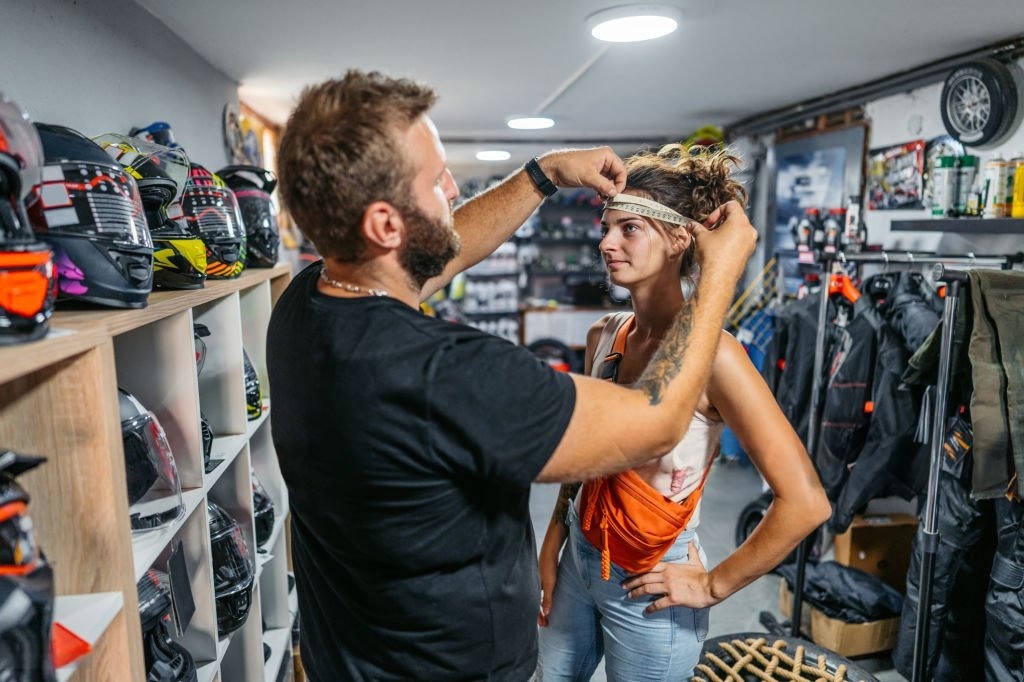
Weight & Comfort
Lighter helmets reduce neck fatigue and make riding more enjoyable. Carbon‑shell lids like the AGV K6 S and Bell Race Star drop weight without sacrificing strength. However, super‑light shells may transmit more vibration or feel less planted in crosswinds. Heavier helmets like the Arai Corsair‑X are heavier but extremely stable at speed—a trade‑off many racers find worthwhile.
Ventilation & Noise
Good airflow keeps you cool and focused. Check for multiple intake and exhaust ports and easily operated vents. The Corsair‑X uses ten vents for outstanding cooling, while the RF‑1400’s redesigned vents improve airflow over its predecessor. More vents usually mean more noise; if long‑distance touring is your priority, look for helmets with refined window seals and thicker neck rolls. Earplugs are a smart investment with any helmet—especially high‑airflow models like the X‑15.
Visor Systems
A high‑quality face shield should be optically correct, easy to remove and include anti‑fog provisions. The RF‑1400’s CWR‑F2 visor offers improved visibility and has an easy central release. Bell’s ProTint shield automatically adapts to changing light, saving you from carrying multiple shields. Pinlock‑ready visors with included inserts (found on the AGV and Arai helmets) are invaluable in humid climates.
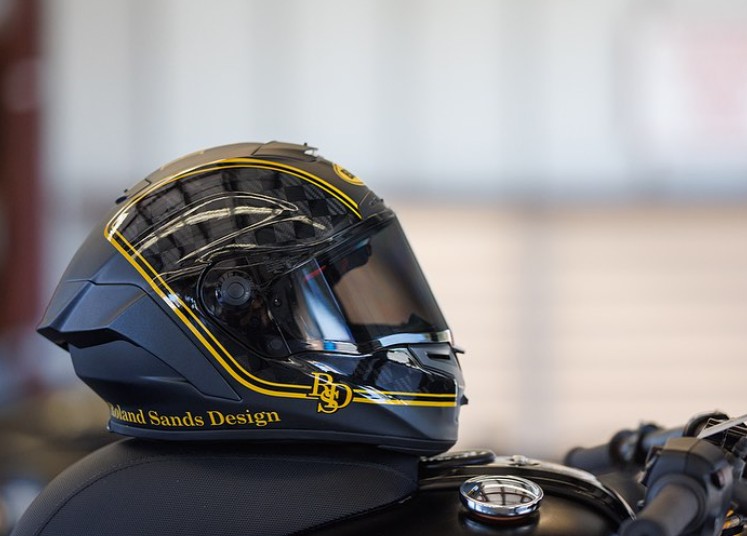
Certification & Use Case
If you plan to ride track days or participate in sanctioned racing, verify the organization’s helmet requirements. Many U.S. tracks require Snell or FIM certification; European circuits may insist on ECE 22.06 or FIM only. Street riders can choose either standard—ECE for softer impact absorption and rotational testing, or Snell for a firmer liner that may withstand a single hard strike. Dual‑certified helmets provide flexibility.
Budget vs. Value
High‑end helmets justify their price with lighter shells, advanced impact liners, better aerodynamics and premium interiors. However, mid‑range options like the Sedici Strada III deliver ECE 22.06 protection and features that most riders need for around $300. Decide what features matter most—weight, noise, track eligibility—and spend accordingly. A helmet is an investment in your brain; skimping isn’t worth the risk.
Final Thoughts
Choosing between ECE and Snell shouldn’t feel like a gamble. Both standards set high bars for head protection, but they prioritize different crash scenarios. Understanding those differences helps you pick a helmet that suits your riding style, whether you’re carving mountain roads, commuting year‑round or chasing lap times.

The helmets above are some of the best currently available, and each brings unique strengths—from the feather‑light comfort of the AGV K6 S, to the adaptive visor and cutting‑edge liner of the Bell Race Star DLX Flex, to the race‑proven pedigree of the Arai Corsair‑X and Shoei X‑15. Whichever lid you choose, make sure it fits perfectly, meets the required certification for your ride and inspires confidence every time you throw a leg over your bike.
Related

Carbon Fiber Modular Helmets: Ultimate Flip-Up Lids
Discover carbon fiber modular helmets that deliver flip-up convenience, lightweight strength, and serious protection for every ride.

